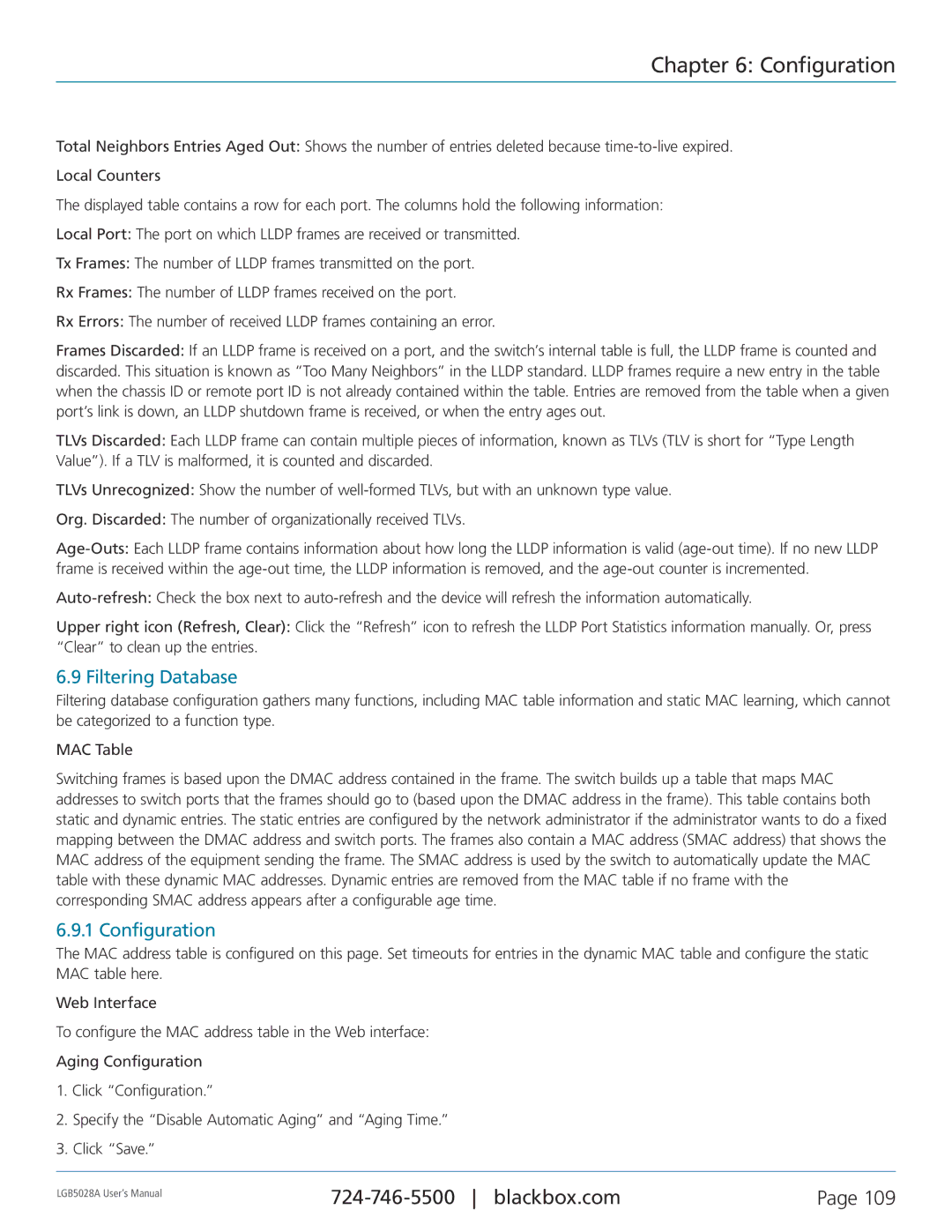
Chapter 6: Configuration
Total Neighbors Entries Aged Out: Shows the number of entries deleted because
Local Counters
The displayed table contains a row for each port. The columns hold the following information:
Local Port: The port on which LLDP frames are received or transmitted.
Tx Frames: The number of LLDP frames transmitted on the port.
Rx Frames: The number of LLDP frames received on the port.
Rx Errors: The number of received LLDP frames containing an error.
Frames Discarded: If an LLDP frame is received on a port, and the switch’s internal table is full, the LLDP frame is counted and discarded. This situation is known as “Too Many Neighbors” in the LLDP standard. LLDP frames require a new entry in the table when the chassis ID or remote port ID is not already contained within the table. Entries are removed from the table when a given port’s link is down, an LLDP shutdown frame is received, or when the entry ages out.
TLVs Discarded: Each LLDP frame can contain multiple pieces of information, known as TLVs (TLV is short for “Type Length Value”). If a TLV is malformed, it is counted and discarded.
TLVs Unrecognized: Show the number of
Org. Discarded: The number of organizationally received TLVs.
Upper right icon (Refresh, Clear): Click the “Refresh” icon to refresh the LLDP Port Statistics information manually. Or, press “Clear” to clean up the entries.
6.9 Filtering Database
Filtering database configuration gathers many functions, including MAC table information and static MAC learning, which cannot be categorized to a function type.
MAC Table
Switching frames is based upon the DMAC address contained in the frame. The switch builds up a table that maps MAC addresses to switch ports that the frames should go to (based upon the DMAC address in the frame). This table contains both static and dynamic entries. The static entries are configured by the network administrator if the administrator wants to do a fixed mapping between the DMAC address and switch ports. The frames also contain a MAC address (SMAC address) that shows the MAC address of the equipment sending the frame. The SMAC address is used by the switch to automatically update the MAC table with these dynamic MAC addresses. Dynamic entries are removed from the MAC table if no frame with the corresponding SMAC address appears after a configurable age time.
6.9.1 Configuration
The MAC address table is configured on this page. Set timeouts for entries in the dynamic MAC table and configure the static MAC table here.
Web Interface
To configure the MAC address table in the Web interface:
Aging Configuration
1.Click “Configuration.”
2.Specify the “Disable Automatic Aging” and “Aging Time.”
3.Click “Save.”
LGB5028A User‘s Manual | Page 109 | |
|
|
